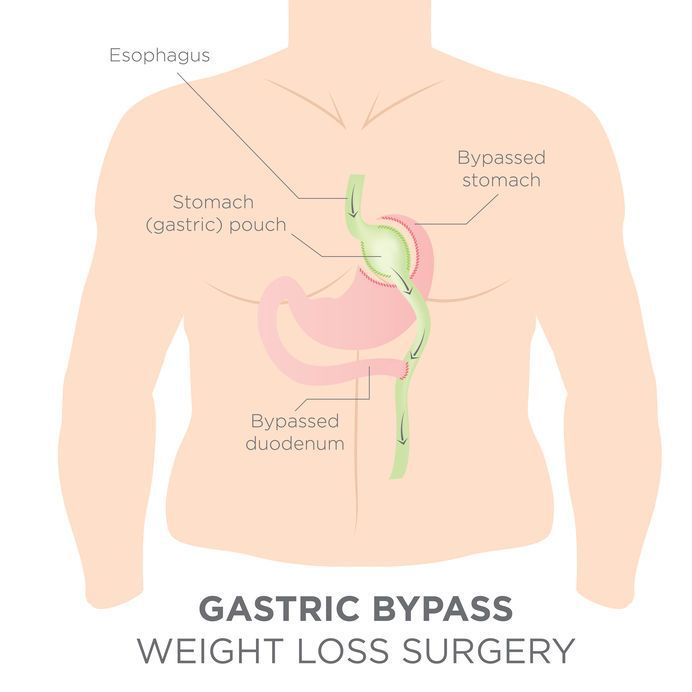 Roux-en-Y gastric bypass surgery is a type of weight loss surgery that is done when you have serious health problems associated with your weight. This procedure is recommended if your diet and exercises never worked to promote weight loss. The technique involved in Roux-en-Y surgery involves creating a small proximal pouch and a bypass procedure, which helps to promote malabsorption. This type of surgery facilitates more weight loss compared to lifestyle changes such as regular workouts and following a healthy diet. Here are five things you need to know about Roux-en-Y surgery.
Roux-en-Y gastric bypass surgery is a type of weight loss surgery that is done when you have serious health problems associated with your weight. This procedure is recommended if your diet and exercises never worked to promote weight loss. The technique involved in Roux-en-Y surgery involves creating a small proximal pouch and a bypass procedure, which helps to promote malabsorption. This type of surgery facilitates more weight loss compared to lifestyle changes such as regular workouts and following a healthy diet. Here are five things you need to know about Roux-en-Y surgery.
- The Purpose of Roux-en-Y Surgery
Gastric bypass is done to help reduce your risk of life-threatening weight-related health problems by promoting extreme weight loss. Overweight individuals are more likely to suffer from high cholesterol, high blood pressure, diabetes, and obstructive sleep apnea. They may even have trouble carrying out simple exercises that aid in weight loss because of the excess body mass that affects their flexibility.
A Roux-en-Y gastric bypass can help reduce the excess fats from your body to minimize the risk of health problems associated with obesity. However, it can only be used after you have tried losing weight through regular exercises and diet without any results. A surgeon will also assess your condition before checking you in for Roux-en-Y gastric bypass surgery.
- The Procedure Used
The process of Roux-en-Y gastric bypass surgery starts by molding a small pouch out of the top part of the stomach. The decreased size of the stomach is meant to reduce the quantity of food that you can eat. The bottom of the stomach, also referred to as pylorus, is no longer used, which helps to control the amount of food moving into the intestine. The small pouch created at the top of your stomach is directly attached to your small intestine. This connection bypasses a large portion of the stomach and duodenum, which is the first part of your small intestine. The food you eat after surgery will pass through the connection created between the small intestine and the pouch, which is deliberately made narrow to increase the length of time food stays in your stomach.
- Eligibility Criteria
Not every overweight person is eligible for Roux-en-Y gastric bypass surgery. Individuals who are scheduled for this type of surgery are those who have developed serious health problems associated with obesity. You can also have a weight-loss surgery if you have tried keeping it off by dieting, exercise or lifestyle changes but realized no results. Doctors determine which patients should be scheduled for gastric bypass surgery using the body mass index and chronic health conditions such as extreme joint pain, high blood pressure, and diabetes. A bariatric surgeon will discuss with you the best options for weight loss based on the findings and eligibility criteria.
- Benefits of Roux-en-Y Gastric Bypass
Roux-en-Y gastric bypass is known to be an effective weight loss surgery that offers dramatic changes than any other weight loss procedures. Most patients lose about 50 to 70 percent of their excess weight after surgery. The amount of weight lost during the procedure may vary depending on the individual circumstances of a patient. It reduces your risk of hypertension, heart failure, arthritis, and other health conditions associated with obesity. Losing a significant amount of weight after the surgery improves your quality of life, as it enhances your maneuverability and ability to do your everyday activities.
- Risks of Roux-en-Y Gastric Bypass
While Roux-en-Y gastric bypass surgery may be useful in reducing a large amount of weight, it comes with its own risks, which is common with major surgeries. One of the greatest risks of Roux-en-Y surgery is that you may develop blood clots or deep vein thrombosis during the first 6 weeks after the operation. However, blood thinning medications, compression stockings and occasional use of a compression pump could help prevent this from happening. It is important to discuss these risks with your surgeon and follow their recommended lifestyle changes you need to incorporate in your daily activities.
Roux-en-Y gastric bypass is not meant for everyone and people who go for this surgery need to be committed to the new workout routines and diet plans given by the surgeon. Lifestyle changes after gastric bypass surgery are considered the most difficult part of the recovery process. Adopting moderate exercises and eating habits helps you maintain weight loss over an extended period. Constant motivation and frequent checkups help to prevent the development of complications after surgery.

